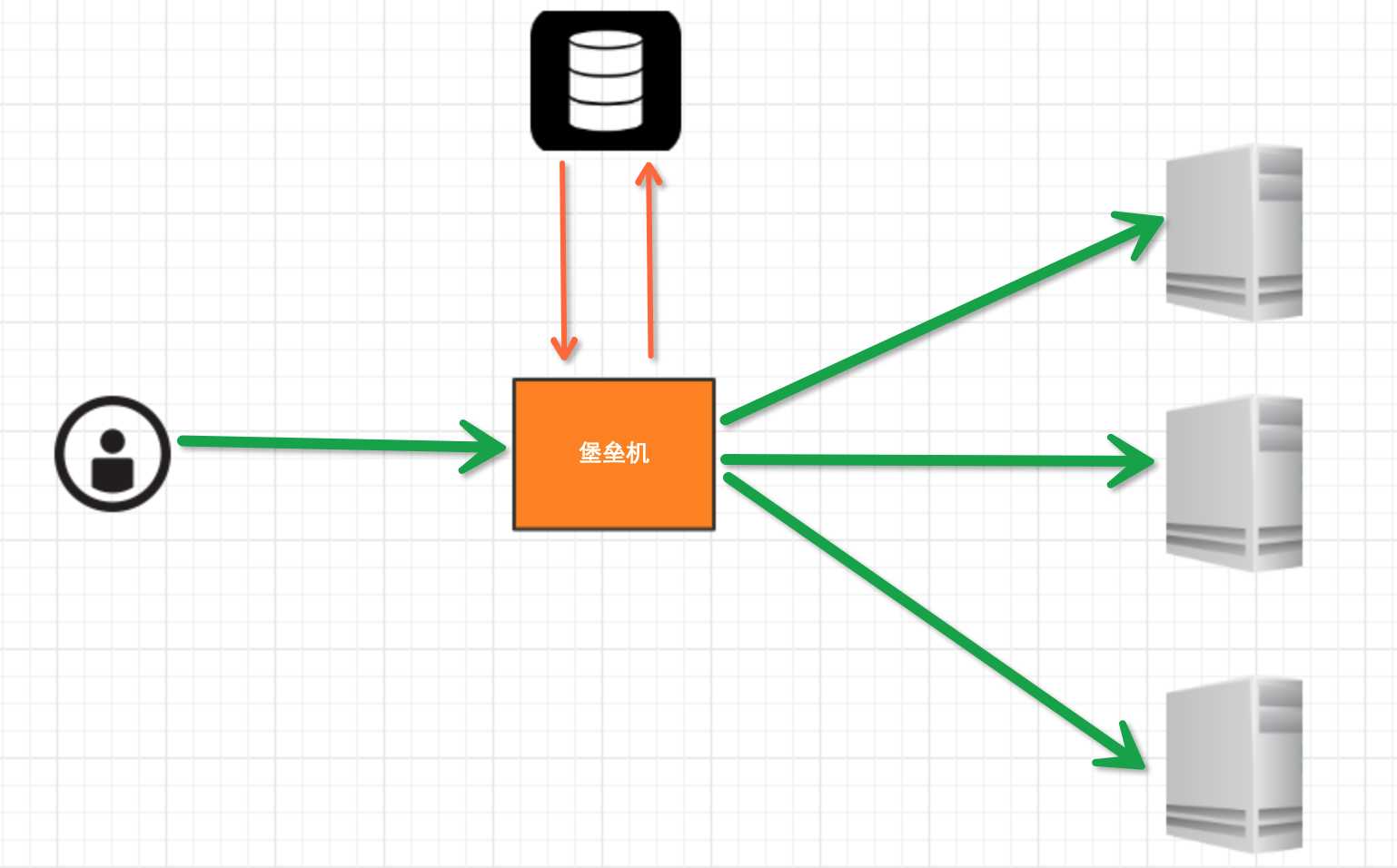标签:
开发堡垒机之前,先来学习Python的paramiko模块,该模块机遇SSH用于连接远程服务器并执行相关操作
SSHClient
用于连接远程服务器并执行基本命令
基于用户名密码连接:
|
1
2
3
4
5
6
7
8
9
10
11
12
13
14
15
16
|
import paramiko# 创建SSH对象ssh = paramiko.SSHClient()# 允许连接不在know_hosts文件中的主机ssh.set_missing_host_key_policy(paramiko.AutoAddPolicy())# 连接服务器ssh.connect(hostname=‘c1.salt.com‘, port=22, username=‘wupeiqi‘, password=‘123‘)# 执行命令stdin, stdout, stderr = ssh.exec_command(‘df‘)# 获取命令结果result = stdout.read()# 关闭连接ssh.close() |


import paramiko transport = paramiko.Transport((‘hostname‘, 22)) transport.connect(username=‘wupeiqi‘, password=‘123‘) ssh = paramiko.SSHClient() ssh._transport = transport stdin, stdout, stderr = ssh.exec_command(‘df‘) print stdout.read() transport.close()
基于公钥密钥连接:
|
1
2
3
4
5
6
7
8
9
10
11
12
13
14
15
16
17
18
|
import paramikoprivate_key = paramiko.RSAKey.from_private_key_file(‘/home/auto/.ssh/id_rsa‘)# 创建SSH对象ssh = paramiko.SSHClient()# 允许连接不在know_hosts文件中的主机ssh.set_missing_host_key_policy(paramiko.AutoAddPolicy())# 连接服务器ssh.connect(hostname=‘c1.salt.com‘, port=22, username=‘wupeiqi‘, key=private_key)# 执行命令stdin, stdout, stderr = ssh.exec_command(‘df‘)# 获取命令结果result = stdout.read()# 关闭连接ssh.close() |


import paramiko private_key = paramiko.RSAKey.from_private_key_file(‘/home/auto/.ssh/id_rsa‘) transport = paramiko.Transport((‘hostname‘, 22)) transport.connect(username=‘wupeiqi‘, pkey=private_key) ssh = paramiko.SSHClient() ssh._transport = transport stdin, stdout, stderr = ssh.exec_command(‘df‘) transport.close()
SFTPClient
用于连接远程服务器并执行上传下载
基于用户名密码上传下载
|
1
2
3
4
5
6
7
8
9
10
11
12
|
import paramikotransport = paramiko.Transport((‘hostname‘,22))transport.connect(username=‘wupeiqi‘,password=‘123‘)sftp = paramiko.SFTPClient.from_transport(transport)# 将location.py 上传至服务器 /tmp/test.pysftp.put(‘/tmp/location.py‘, ‘/tmp/test.py‘)# 将remove_path 下载到本地 local_pathsftp.get(‘remove_path‘, ‘local_path‘)transport.close() |
基于公钥密钥上传下载
|
1
2
3
4
5
6
7
8
9
10
11
12
13
14
|
import paramikoprivate_key = paramiko.RSAKey.from_private_key_file(‘/home/auto/.ssh/id_rsa‘)transport = paramiko.Transport((‘hostname‘, 22))transport.connect(username=‘wupeiqi‘, pkey=private_key )sftp = paramiko.SFTPClient.from_transport(transport)# 将location.py 上传至服务器 /tmp/test.pysftp.put(‘/tmp/location.py‘, ‘/tmp/test.py‘)# 将remove_path 下载到本地 local_pathsftp.get(‘remove_path‘, ‘local_path‘)transport.close() |


#!/usr/bin/env python
# -*- coding:utf-8 -*-
import paramiko
import uuid
class Haproxy(object):
def __init__(self):
self.host = ‘172.16.103.191‘
self.port = 22
self.username = ‘wupeiqi‘
self.pwd = ‘123‘
self.__k = None
def create_file(self):
file_name = str(uuid.uuid4())
with open(file_name,‘w‘) as f:
f.write(‘sb‘)
return file_name
def run(self):
self.connect()
self.upload()
self.rename()
self.close()
def connect(self):
transport = paramiko.Transport((self.host,self.port))
transport.connect(username=self.username,password=self.pwd)
self.__transport = transport
def close(self):
self.__transport.close()
def upload(self):
# 连接,上传
file_name = self.create_file()
sftp = paramiko.SFTPClient.from_transport(self.__transport)
# 将location.py 上传至服务器 /tmp/test.py
sftp.put(file_name, ‘/home/wupeiqi/tttttttttttt.py‘)
def rename(self):
ssh = paramiko.SSHClient()
ssh._transport = self.__transport
# 执行命令
stdin, stdout, stderr = ssh.exec_command(‘mv /home/wupeiqi/tttttttttttt.py /home/wupeiqi/ooooooooo.py‘)
# 获取命令结果
result = stdout.read()
ha = Haproxy()
ha.run()
实现思路:

堡垒机执行流程:
注:配置.brashrc实现ssh登陆后自动执行脚本,如:/usr/bin/python /home/wupeiqi/menu.py
实现过程
步骤一,实现用户登陆
|
1
2
3
4
5
6
7
8
|
import getpassuser = raw_input(‘username:‘)pwd = getpass.getpass(‘password‘)if user == ‘alex‘ and pwd == ‘123‘: print ‘登陆成功‘else: print ‘登陆失败‘ |
步骤二,根据用户获取相关服务器列表
|
1
2
3
4
5
6
7
8
9
10
11
12
13
14
15
16
17
18
19
20
21
|
dic = { ‘alex‘: [ ‘172.16.103.189‘, ‘c10.puppet.com‘, ‘c11.puppet.com‘, ], ‘eric‘: [ ‘c100.puppet.com‘, ]}host_list = dic[‘alex‘]print ‘please select:‘for index, item in enumerate(host_list, 1): print index, iteminp = raw_input(‘your select (No):‘)inp = int(inp)hostname = host_list[inp-1]port = 22 |
步骤三,根据用户名、私钥登陆服务器
|
1
2
3
4
5
6
7
8
9
10
11
12
13
14
15
16
17
18
19
20
21
22
|
tran = paramiko.Transport((hostname, port,))tran.start_client()default_path = os.path.join(os.environ[‘HOME‘], ‘.ssh‘, ‘id_rsa‘)key = paramiko.RSAKey.from_private_key_file(default_path)tran.auth_publickey(‘wupeiqi‘, key)# 打开一个通道chan = tran.open_session()# 获取一个终端chan.get_pty()# 激活器chan.invoke_shell()########## 利用sys.stdin,肆意妄为执行操作# 用户在终端输入内容,并将内容发送至远程服务器# 远程服务器执行命令,并将结果返回# 用户终端显示内容#########chan.close()tran.close() |


while True:
# 监视用户输入和服务器返回数据
# sys.stdin 处理用户输入
# chan 是之前创建的通道,用于接收服务器返回信息
readable, writeable, error = select.select([chan, sys.stdin, ],[],[],1)
if chan in readable:
try:
x = chan.recv(1024)
if len(x) == 0:
print ‘\r\n*** EOF\r\n‘,
break
sys.stdout.write(x)
sys.stdout.flush()
except socket.timeout:
pass
if sys.stdin in readable:
inp = sys.stdin.readline()
chan.sendall(inp)


# 获取原tty属性
oldtty = termios.tcgetattr(sys.stdin)
try:
# 为tty设置新属性
# 默认当前tty设备属性:
# 输入一行回车,执行
# CTRL+C 进程退出,遇到特殊字符,特殊处理。
# 这是为原始模式,不认识所有特殊符号
# 放置特殊字符应用在当前终端,如此设置,将所有的用户输入均发送到远程服务器
tty.setraw(sys.stdin.fileno())
chan.settimeout(0.0)
while True:
# 监视 用户输入 和 远程服务器返回数据(socket)
# 阻塞,直到句柄可读
r, w, e = select.select([chan, sys.stdin], [], [], 1)
if chan in r:
try:
x = chan.recv(1024)
if len(x) == 0:
print ‘\r\n*** EOF\r\n‘,
break
sys.stdout.write(x)
sys.stdout.flush()
except socket.timeout:
pass
if sys.stdin in r:
x = sys.stdin.read(1)
if len(x) == 0:
break
chan.send(x)
finally:
# 重新设置终端属性
termios.tcsetattr(sys.stdin, termios.TCSADRAIN, oldtty)


def windows_shell(chan):
import threading
sys.stdout.write("Line-buffered terminal emulation. Press F6 or ^Z to send EOF.\r\n\r\n")
def writeall(sock):
while True:
data = sock.recv(256)
if not data:
sys.stdout.write(‘\r\n*** EOF ***\r\n\r\n‘)
sys.stdout.flush()
break
sys.stdout.write(data)
sys.stdout.flush()
writer = threading.Thread(target=writeall, args=(chan,))
writer.start()
try:
while True:
d = sys.stdin.read(1)
if not d:
break
chan.send(d)
except EOFError:
# user hit ^Z or F6
pass
注:密码验证 t.auth_password(username, pw)
详见:paramiko源码demo
Python 操作 Mysql 模块的安装
|
1
2
3
4
5
|
linux: yum install MySQL-pythonwindow: http://files.cnblogs.com/files/wupeiqi/py-mysql-win.zip |
SQL基本使用
1、数据库操作
|
1
2
3
|
show databases; use [databasename];create database [name]; |
2、数据表操作
|
1
2
3
4
5
6
7
8
9
10
|
show tables;create table students ( id int not null auto_increment primary key, name char(8) not null, sex char(4) not null, age tinyint unsigned not null, tel char(13) null default "-" ); |


CREATE TABLE `wb_blog` (
`id` smallint(8) unsigned NOT NULL,
`catid` smallint(5) unsigned NOT NULL DEFAULT ‘0‘,
`title` varchar(80) NOT NULL DEFAULT ‘‘,
`content` text NOT NULL,
PRIMARY KEY (`id`),
UNIQUE KEY `catename` (`catid`)
) ;
3、数据操作
|
1
2
3
4
5
6
7
|
insert into students(name,sex,age,tel) values(‘alex‘,‘man‘,18,‘151515151‘)delete from students where id =2;update students set name = ‘sb‘ where id =1;select * from students |
4、其他
|
1
2
3
|
主键外键左右连接 |
Python MySQL API
一、插入数据
|
1
2
3
4
5
6
7
8
9
10
11
12
13
14
15
|
import MySQLdbconn = MySQLdb.connect(host=‘127.0.0.1‘,user=‘root‘,passwd=‘1234‘,db=‘mydb‘)cur = conn.cursor()reCount = cur.execute(‘insert into UserInfo(Name,Address) values(%s,%s)‘,(‘alex‘,‘usa‘))# reCount = cur.execute(‘insert into UserInfo(Name,Address) values(%(id)s, %(name)s)‘,{‘id‘:12345,‘name‘:‘wupeiqi‘})conn.commit()cur.close()conn.close()print reCount |


import MySQLdb
conn = MySQLdb.connect(host=‘127.0.0.1‘,user=‘root‘,passwd=‘1234‘,db=‘mydb‘)
cur = conn.cursor()
li =[
(‘alex‘,‘usa‘),
(‘sb‘,‘usa‘),
]
reCount = cur.executemany(‘insert into UserInfo(Name,Address) values(%s,%s)‘,li)
conn.commit()
cur.close()
conn.close()
print reCount
注意:cur.lastrowid
二、删除数据
|
1
2
3
4
5
6
7
8
9
10
11
12
13
14
|
import MySQLdbconn = MySQLdb.connect(host=‘127.0.0.1‘,user=‘root‘,passwd=‘1234‘,db=‘mydb‘)cur = conn.cursor()reCount = cur.execute(‘delete from UserInfo‘)conn.commit()cur.close()conn.close()print reCount |
三、修改数据
|
1
2
3
4
5
6
7
8
9
10
11
12
13
|
import MySQLdbconn = MySQLdb.connect(host=‘127.0.0.1‘,user=‘root‘,passwd=‘1234‘,db=‘mydb‘)cur = conn.cursor()reCount = cur.execute(‘update UserInfo set Name = %s‘,(‘alin‘,))conn.commit()cur.close()conn.close()print reCount |
四、查数据
|
1
2
3
4
5
6
7
8
9
10
11
12
13
14
15
16
17
18
19
20
21
22
23
24
25
26
27
28
29
30
31
32
33
34
35
36
37
38
39
40
41
42
43
44
|
# ############################## fetchone/fetchmany(num) ##############################import MySQLdbconn = MySQLdb.connect(host=‘127.0.0.1‘,user=‘root‘,passwd=‘1234‘,db=‘mydb‘)cur = conn.cursor()reCount = cur.execute(‘select * from UserInfo‘)print cur.fetchone()print cur.fetchone()cur.scroll(-1,mode=‘relative‘)print cur.fetchone()print cur.fetchone()cur.scroll(0,mode=‘absolute‘)print cur.fetchone()print cur.fetchone()cur.close()conn.close()print reCount# ############################## fetchall ##############################import MySQLdbconn = MySQLdb.connect(host=‘127.0.0.1‘,user=‘root‘,passwd=‘1234‘,db=‘mydb‘)#cur = conn.cursor(cursorclass = MySQLdb.cursors.DictCursor)cur = conn.cursor()reCount = cur.execute(‘select Name,Address from UserInfo‘)nRet = cur.fetchall()cur.close()conn.close()print reCountprint nRetfor i in nRet: print i[0],i[1] |
标签:
原文地址:http://www.cnblogs.com/lidong94/p/5743348.html